Stories of Service: Lunar New Year Celebrations With Kids
Here’s how some service members honored the Lunar New Year with their students.
Help nourish students’ minds, bodies, and hearts this holiday season!
Here’s how some service members honored the Lunar New Year with their students.

Last month, billions of people around the world celebrated the Lunar New Year and welcomed the Year of the Rabbit (or the Year of the Cat, in Vietnam)—including FoodCorps service members and their students!
FoodCorps service members teach culturally responsive lessons about food and nutrition, centering foods that are significant and familiar to local communities and cultures. To honor Lunar New Year, some service members found creative, inclusive, and delicious ways to recognize this holiday with their students.
Read on to learn how four service members across the country incorporated Lunar New Year traditions and recipes into their lesson plans.
—
“During a 30-minute lesson, we will ‘travel’ around our globe to learn what Lunar New Year is (when and where in the world it’s celebrated), introducing students to many different traditions encapsulated by this event, with a spotlight on what’s known as hóngbao, or the distribution of a bright red envelope that symbolizes giving of good wishes and luck for the new year. This will be given along with either raisins (in lieu of candy) or oranges/clementines (a common Chinese New Year food gift believed to bring good luck and happiness).
We had two students in one of our second-grade classes who celebrated Lunar New Year last Sunday. They shared with us some special parts of their celebrations, such as giving and receiving red envelopes, and lighting lanterns to release outside when it gets dark out. I was so glad the students felt comfortable sharing these stories with our class and were able to share the experience of one of these special traditions (the giving of the red envelopes) in class to help their classmates learn about traditions that contribute to the fabric of our culture.”
—
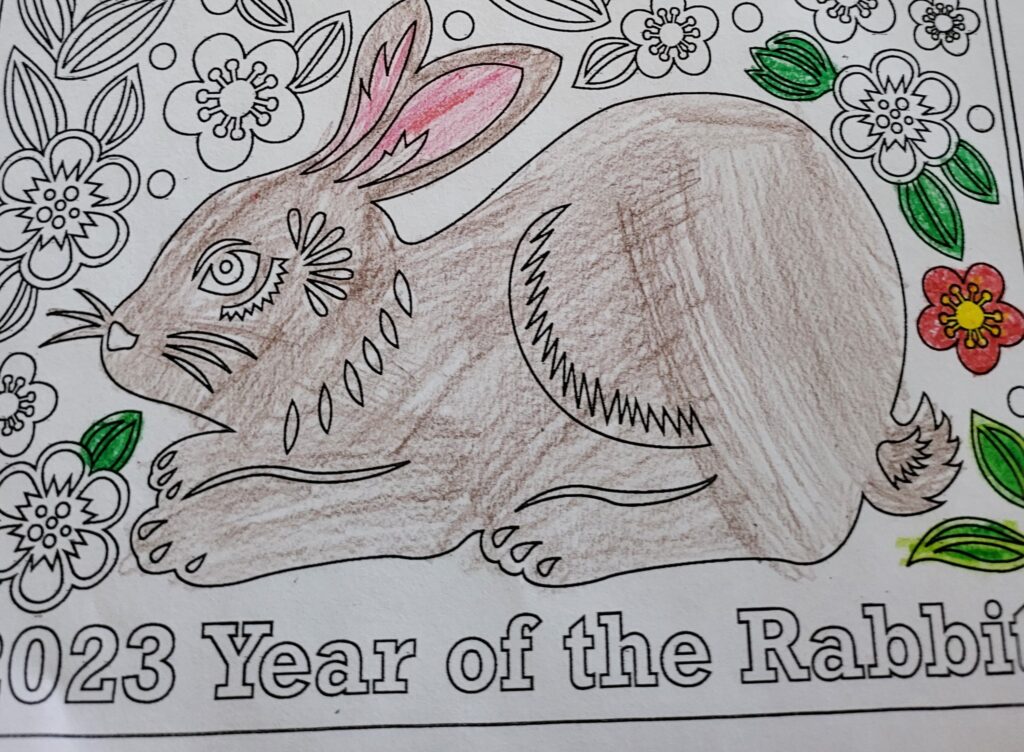
“Another fun lesson was an opportunity to celebrate and teach about Lunar New Year. I quizzed the fourth graders on their knowledge of the tradition and went further and explained the phases of the moon in the New Year and the significance of the red colored lanterns; cleaning the home, body, and mind; and the many foods that come with these traditionally Asian celebrations. I gave them a ‘Year of the Rabbit’ themed coloring page and explained that we are also doing a social/emotional lesson because I brought in my rabbit, Bun-Bun, for them to take a picture with when they are done coloring their page. This coloring meditation is an easy way to calm the atmosphere.
I added a video by a blogger, Ziqi Li, in the background as a visual of traditional Lunar New Year food made from scratch as another way to ease the atmosphere. I encouraged the students to use bright colors as a symbol of good luck. I set up a little photo shoot area with red lanterns for the students to take a picture holding Bun-Bun and their artwork presented. It was a great opportunity to have a one-on-one moment with each student as we practiced breathing techniques to help further calm their heart rate and body so they can have a lovely, calming moment petting Bun-Bun. Even Ms. Morales had a nice time holding Bun-Bun in her arms as the students colored their pages!
To continue the Lunar New Year lesson into the after-school program, I brought in a setup to make fried rice for Lunar New Year. I explained that rice is a symbol of prosperity for the New Year and brought in some traditional Chinese cooking equipment, vegetables, pre-cooked rice, and sauces. We started off by sanitizing the tables we were using and washing our hands. Then we set up stations and picked teams. Each team member was responsible for chopping the vegetables. We had carrots, baby bok choy, broccoli, yellow and green onions, and red and yellow peppers. Then I fired up the wok and heated up the coconut oil. I showed the students each step of the stir-frying process and each of them had a chance to stir up each ingredient. Each team also put together their sauce mix to add to the fried rice. Afterwards, we had a family meal and everyone ate their portion of fried rice and had enough to take home!”
—
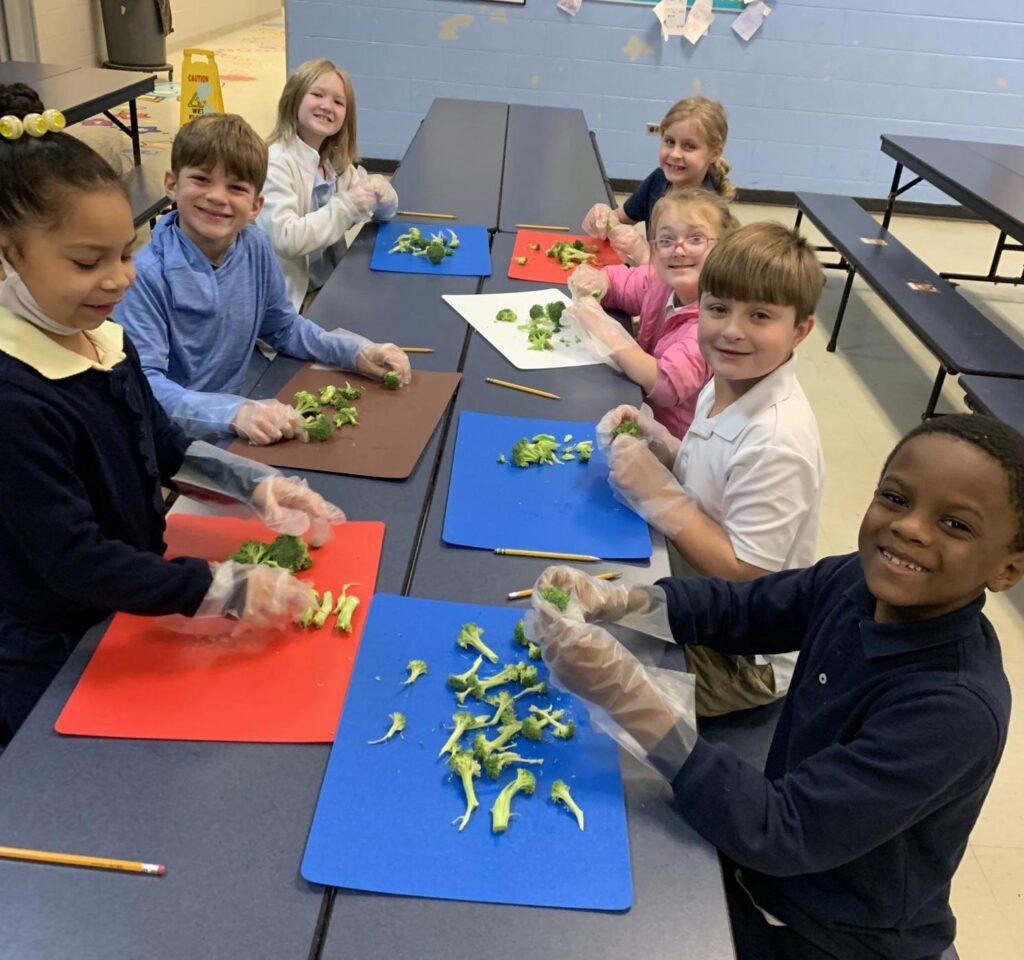
“I tied the Lunar New Year to our second-grade ‘Saute It’ lesson. Some students actually knew that the Lunar New Year started this week. Our ‘Saute It’ lesson was based on the connection with properties of matter and the water cycle; however, I introduced the lesson as a way that we could celebrate the Lunar New Year by preparing a Chinese-American dish: stir fry. I used the stir fry lesson that is listed in the FoodCorps lesson plan. Students prepared the cabbage, broccoli, cauliflower, and peppers by tearing up big pieces into bite size pieces. I also added pre-shredded carrots as the fifth vegetable.
To add to the properties of matter lesson, as well as parts of the water cycle — evaporation, condensation and precipitation — I had the students watch me prepare rice to go as a side. Water, a liquid, takes the shape of its container (also an example of groundwater in our water cycle analogy). When it is heated by the hotplate (or the sun), it boils and releases steam (a gas). The steam/gas condensates on the top of the lid (forms a cloud), and the droplets get so heavy that it precipitates back in the pot (water droplets).
The students were able to describe how the hard, uncooked rice changed its texture to a soft, cooked rice from the absorption of water. We also talked about how our uncooked vegetables were hard, and once cooked they softened. When preparing the saute sauce the students also were able to identify we were making a mixture from the water, vinegar, sugar, soy sauce, broth and cornstarch. Our rice and vegetables were our solids in the lesson. The oil and the water, both liquids, changed their shapes from their measuring cup/spoon to pot/pan.”
—
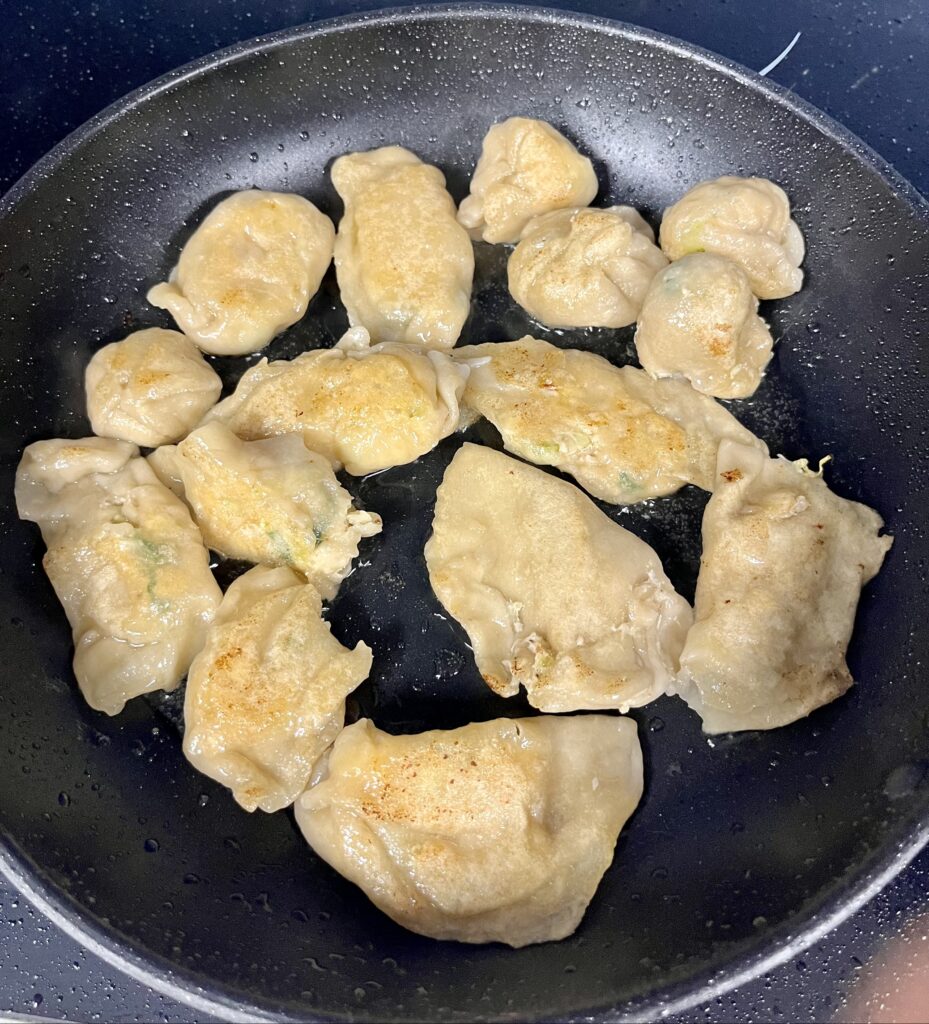
“This week I did a dumpling-making lesson to celebrate Lunar New Year. A lot of the students knew what dumplings were and have had them before, but going through the whole process of making everything from the dough to the filling from scratch really helped them understand the cultural and social value of making it together. I think that a lot of the students’ collaboration with each other and social awareness of each other improved a lot when we were all around the table rolling out the dough and folding it together. I noticed they were really helping each other out and relied on those who had a bit more cooking experience. They also shared and connected about how the process reminded them of some of the things they did in the kitchen with their families.
We celebrated Lunar New Year by making dumplings together. It was a two-day lesson. The first day we talked about what Lunar New Year is, who celebrates it, and what are some food traditions to celebrate. Then we made the dumpling wrapper dough and rolled them out. The second day we made the filling and learned how to fold the dumplings. Students were able to taste their dumplings and bring some home to their families if they wanted.”
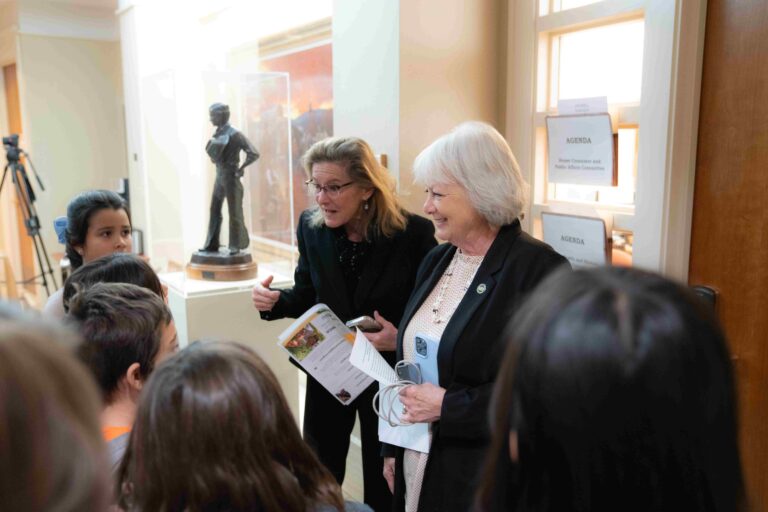
Our 2025 Child Nutrition Policy Year in Review
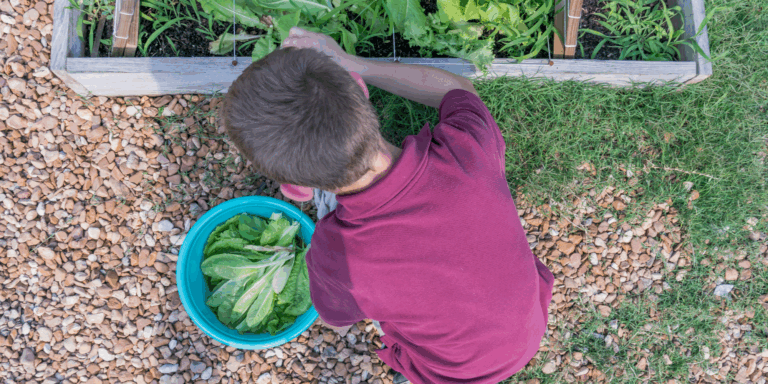
Winterizing Your School Garden
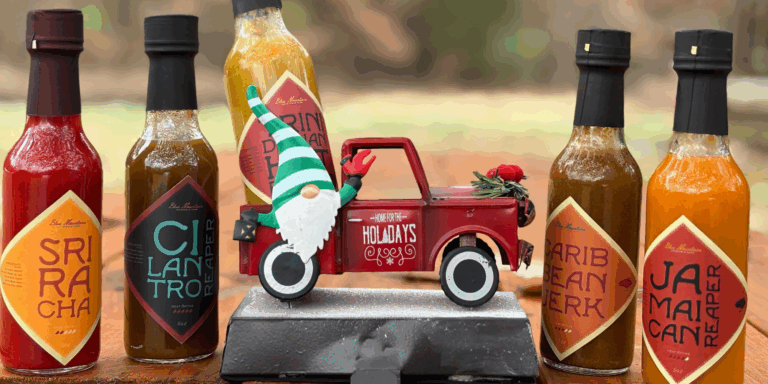
5 Awesome Small Businesses by FoodCorps Alums